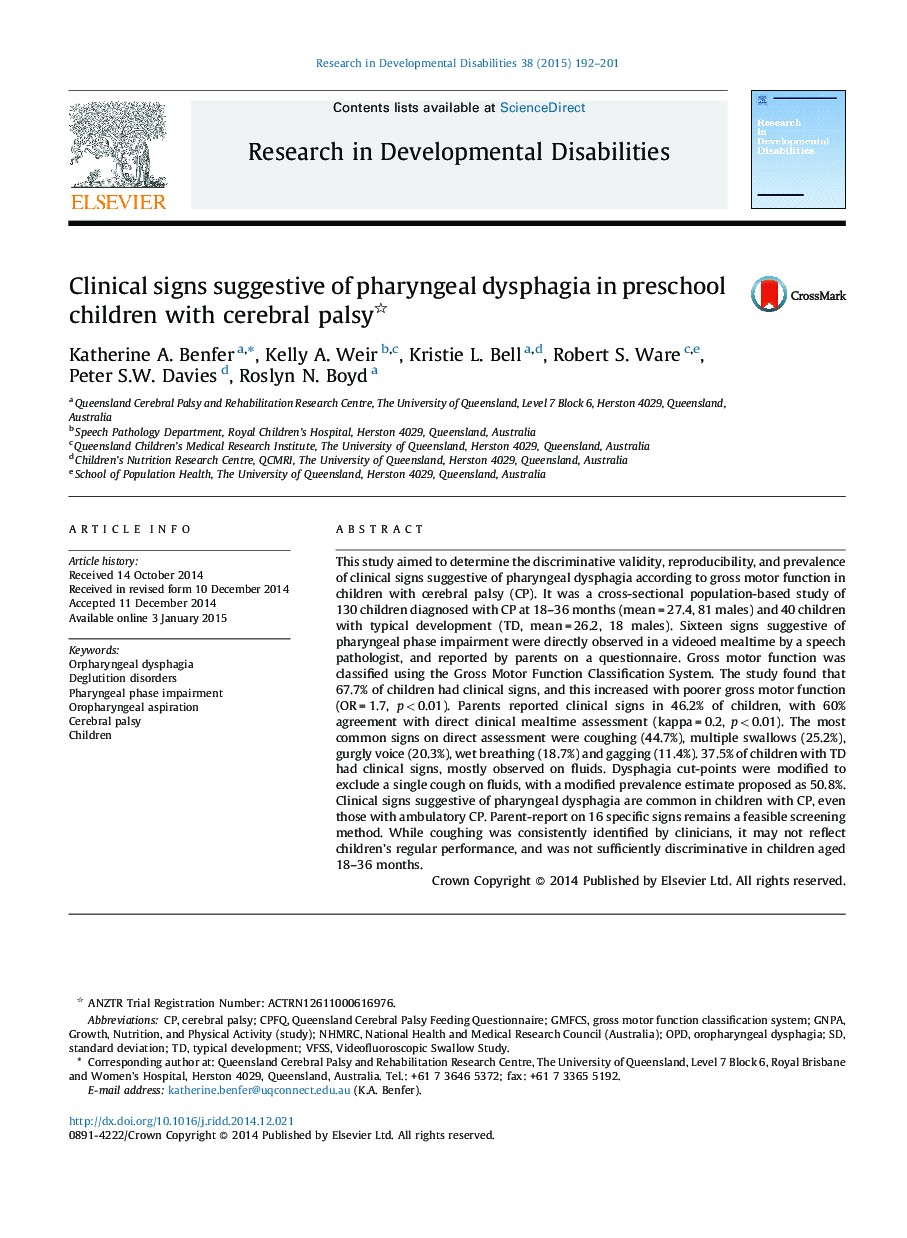| Article ID | Journal | Published Year | Pages | File Type |
|---|---|---|---|---|
| 371223 | Research in Developmental Disabilities | 2015 | 10 Pages |
•Clinical signs suggestive of pharyngeal phase impairments are common in children with CP, even GMFCS I and II.•Parent-report is a feasible method for screening if asked to observe specific clinical signs.•Cough was observed frequently in children with typical development.•An isolated cough on thin fluids may not be sufficiently discriminative in children aged 18–36 months.•All 16 clinical signs had strong reproducibility by clinicians.
This study aimed to determine the discriminative validity, reproducibility, and prevalence of clinical signs suggestive of pharyngeal dysphagia according to gross motor function in children with cerebral palsy (CP). It was a cross-sectional population-based study of 130 children diagnosed with CP at 18–36 months (mean = 27.4, 81 males) and 40 children with typical development (TD, mean = 26.2, 18 males). Sixteen signs suggestive of pharyngeal phase impairment were directly observed in a videoed mealtime by a speech pathologist, and reported by parents on a questionnaire. Gross motor function was classified using the Gross Motor Function Classification System. The study found that 67.7% of children had clinical signs, and this increased with poorer gross motor function (OR = 1.7, p < 0.01). Parents reported clinical signs in 46.2% of children, with 60% agreement with direct clinical mealtime assessment (kappa = 0.2, p < 0.01). The most common signs on direct assessment were coughing (44.7%), multiple swallows (25.2%), gurgly voice (20.3%), wet breathing (18.7%) and gagging (11.4%). 37.5% of children with TD had clinical signs, mostly observed on fluids. Dysphagia cut-points were modified to exclude a single cough on fluids, with a modified prevalence estimate proposed as 50.8%. Clinical signs suggestive of pharyngeal dysphagia are common in children with CP, even those with ambulatory CP. Parent-report on 16 specific signs remains a feasible screening method. While coughing was consistently identified by clinicians, it may not reflect children's regular performance, and was not sufficiently discriminative in children aged 18–36 months.
